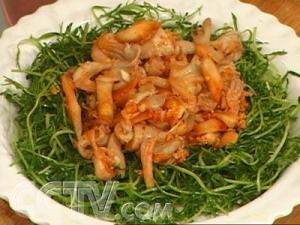1) Japanese rice paste


日本米酱
1.
Variety and source of carbohydrate in Japanese rice paste;


日本米酱中碳水化合物的种类及其来源
2) Japanese soy sauce


日本酱油
1.
Study on shortening fermentation period of Japanese soy sauce;


日本酱油缩短发酵周期的研究
2.
The feature and fermenting technology of Japanese soy sauce;


日本酱油的特征及其酿造工艺
3) Japanese horseradish paste


日本青芥辣酱膏
1.
A Japanese horseradish paste was mad e up of horseradish powder and other ingred ients on the basis of extensive tests.
以辣根粉为原料,辅以其它配料,通过科学方法进行了大量试验,配制出目前市场上流行的调味品——日本青芥辣酱膏。
5) rice miso


米酱
1.
The effect of raw materials on the component of rice miso and wheat miso were explained.


介绍了日本酱的种类、口味、理化成分及其熟成度,说明了原料对米酱和麦酱成分的影响,对酱中的氮成分、维生素含量及豆酱中低分子肽的组成进行了分析。
6) Quercus cuspidata


日本米槠林
1.
Seasonal dynamics in litterfall,nutrient concentrations of litter and litter nutrient accumulation were studied in evergreena confiner Cryptomeria japonica forest,evergreen broad leaved Quercus cuspidata forest and evergreen and deciduous broadleaved mixed forest at Nagoya,Japan.
日本柳杉林、日本米槠林和常绿落叶阔叶混交林的年凋落量分别为 730 9kg· hm- 2、5 790 kg· hm- 2和 5 32 5 kg· hm- 2 ,日本柳杉林的主要凋落高峰发生在 9月 ,次要凋落高峰发生在 3月 ,而日本米槠林和常绿落叶阔叶混交林的凋落高峰分别发生在 5月和 11~ 12月。
补充资料:苦菊米酱拌鲜蘑

苦菊米酱拌鲜蘑
主料:苦菊、蘑菇
辅料:姜、蒜
调料:盐、鸡精、白糖、白醋、芝麻、米酱、香油
烹制方法:
1、将蘑菇撕成细丝,焯水控干晾凉,姜、蒜分别切成末,苦菊中加入盐、鸡精、香油搅拌均匀放在盘中;
2、蘑菇中加入姜蒜末、盐、白糖、芝麻、白醋、米酱拌匀,放在苦菊上即可。
特点:咸鲜微苦,香辣爽口。
说明:补充资料仅用于学习参考,请勿用于其它任何用途。